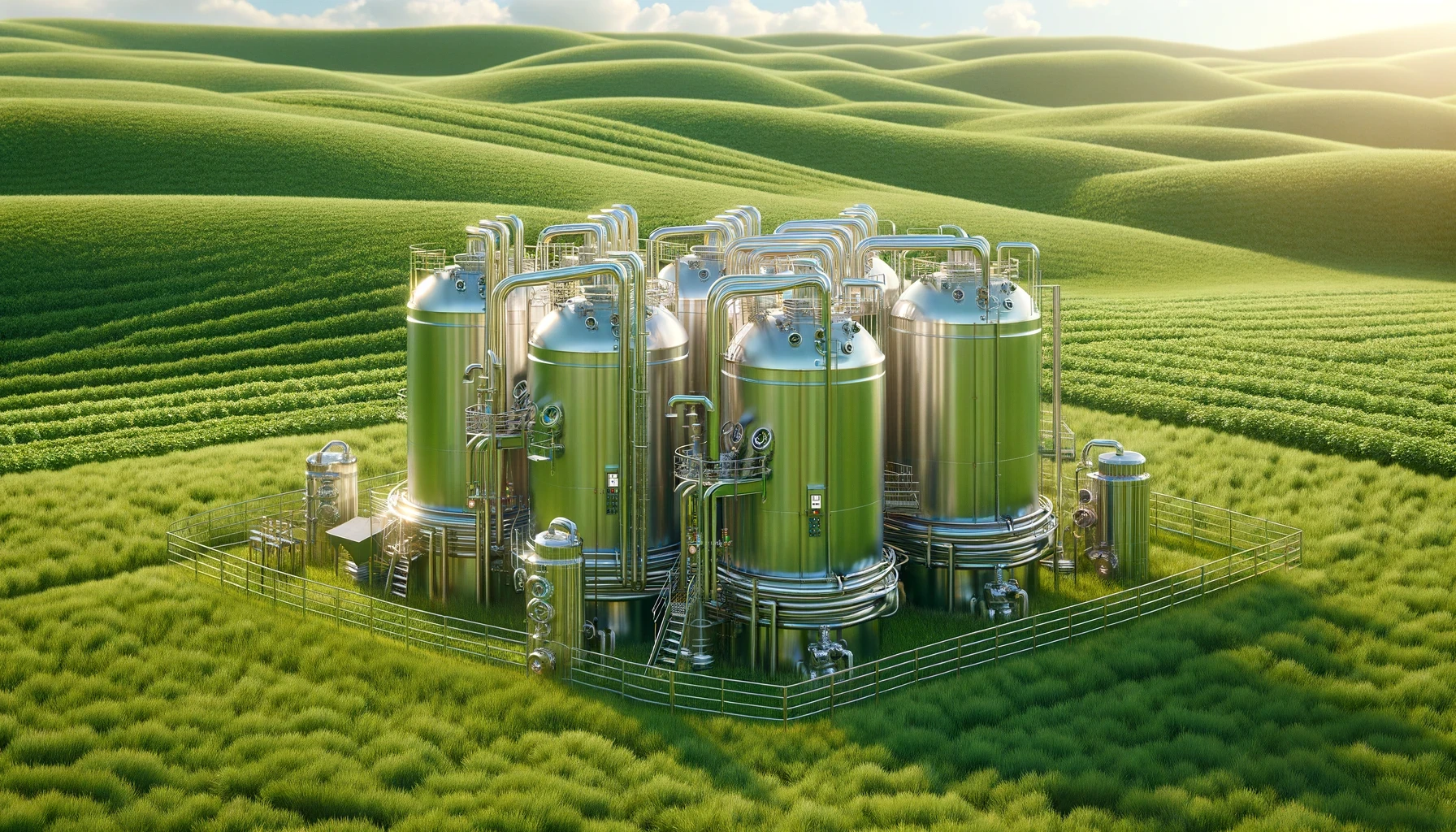Biomanufacturing Scale Up
Can Biology Become the Main Source of Our Chemical Feedstocks?
The chemical industry is an obvious target for impactful synbio research and innovation, but entering it is challenging and full of complex considerations. Can synthetic biology help reinvent it and provide sustainable alternatives for the majority of chemical products on the market?
Apr 9, 2024
One thing common among the scientists, entrepreneurs, and ecosystem builders involved in the Synthetic Biology industry is the desire to make a positive impact and leave a better planet for the generations to come. Ginger Krieg Dosier was perplexed by the environmental impact of the construction industry, especially the production of cement. She discovered that bacteria can catalyze biomineralization, and she co-founded Biomason, an innovative company that uses biomaterials to revolutionize how we build our cities in an environmentally friendly way.
The use of synbio to contribute to more environmentally friendly chemicals will be discussed extensively during the SynbioBeta 2024 Conference, where Ginger Krieg Dosier is chair of the Chemicals and Materials track.
Solutions Exist, but How Do We Integrate Them?
Synthetic biology can have a positive impact on several industries. However, we haven’t yet seen the integration that we had hoped for. The 21st century is supposed to be the century of biology, but it seems the century is on a slow start. “It is a good time to have an honest conversation and talk about the potential of synthetic biology,” Krieg Dosier told me when I asked her about the potential impact and where the efforts of the community should concentrate. She mentioned that we don’t need to start over from scratch and rediscover entire supply chains and materials but weigh on high performance that, together with the sustainability angle, can find its way into the market.

“Today, the complex molecules that are part of everyday life are primarily extracted from plants, animals or fossil fuels, often with unstable supply chains and massive negative impact on the environment,” Christine Santos, Chief Technology Officer at Manus Bio explained. “With Synthetic Biology, these complex molecules can be produced locally, reliably, and sustainably, using a combination of cell-factory engineering and precision fermentation.”
In an ideal scenario, synthetic biology products would be able to replace petrochemicals in a matter of years. Freya Burton, Chief Sustainability Officer of LanzaTech, thinks this is possible, but it would take many years, and we would need to be creative about it. In her opinion, developing a biobased chemical industry should come hand in hand with improving carbon capture technologies. “We have 20 times the carbon we need to produce all the chemicals we want, but only if we account for the carbon dioxide in the air”, she said. Lanzatech is currently producing ethylene using carbon fermentation. The company wants to target a large potential market and achieve significant environmental impact by biosourcing a compound used in many industries, and ethylene fits the bill on both ends.
Santos attributes the difficulty in getting new biomade chemicals into the market to the difficulty of getting microbial strains to perform at scale. “Most cell factories fail to perform beyond lab scale, as their metabolic pathways and enzymatic activities don’t always translate well into large-scale manufacturing environments”', she explained. The company is tackling this challenge using data- and insight-driven microbial engineering. “ Our proprietary BioOptimization Cycle allows us to engineer metabolic pathways and enzymatic activities within the host-microbe so efficiently that yields quickly reach required levels at manufacturing scale,” Santos noted. Manus produces specialty chemicals, such as BioNootkatone, a bioalternative to citrus oil.
Partnerships Are Key to Successful Integration
What the synbio community tries to achieve is a revolutionary approach to how chemicals are produced and reach the market. And this revolution cannot happen unless a whole ecosystem is built and supports the successful integration of bioalternatives.
It appears that successful partnerships can make the difference between a synbio startup’s success and failure. Entrepreneurs need to deeply understand the needs of the whole ecosystem and take into account suppliers, customers, and end users. This is especially true for companies moving into the chemical industry, where relationships and supply chains are not always obvious. Also, companies need success stories to maintain traction and convince the industry and consumers that biology can provide viable petrochemical alternatives.
LanzaTech sees partnerships as a critical component of its success. Burton explained that LanzaTech is usually approached by partners with specific needs for compounds or changes to their supply chain, and the company connects them to the carbon emitters. Lanzatech acts as a bridge, providing the technology and infrastructure. “A good partner has a clear direction, wants to implement change, and is committed to it,” Burton said. “The partners are the ones who tell the story to their consumers.”

Manus uses partnerships all across its operations: universities and colleges for workforce training and development, construction and engineering firms to expand the capabilities at their large-scale facility in Augusta, GA, and, of course, deep collaborations with end users and customers to ensure that their products are suitable and ready for take-up. The company decided to share its expertise in scaling up by launching a BioManufacturing Program. “We are now offering our services to the rest of the Synthetic Biology community to translate our capabilities and learnings into how to efficiently scale technologies,” Santos noted.
Is It Time for a New Bioeconomy Model?
Most current successful applications of synthetic biology in the chemical industry come from the introduction of bioproduced compounds into existing supply chains, usually in relatively small quantities. Companies such as LanzaTech and Manus Bio show us that it’s possible to make a viable business out of it, and both companies have plans to expand their business and make more production facilities in the near future. But we need much more for a real impact to take place. According to Krieg Dosier, diversity is key to success. “We need to open our imagination. We need to get out of our echo chamber”, she emphasized.

Human civilization currently relies heavily on digging materials out of the ground: fossil fuels for energy and as material feedstocks, precious metals for our high-tech devices and batteries, sand for cement, and microchips. Burton pointed out that we underestimate the amount of fossil carbon we wear, put on our skin, and use in our homes and offices as furniture. Biology can become an alternative source of chemicals. It has the technical capacity to do so, but we need to empower it with infrastructure, business and funding models, and talented individuals driven to make change. This will require thinking outside traditional entrepreneurship models and probably new bioeconomy initiatives from the government and the consumers alike.
In the meantime, we need to keep innovating. There are several areas where synbio can enter and make a clear impact. One of them is the cosmetics industry, which I will take a closer look at in an upcoming article.


















